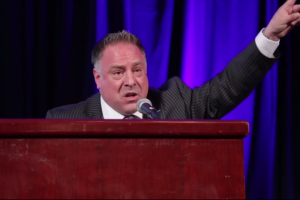Pot Politics
The Compassionate Care Act signed into law on July 7, 2014 makes medical marijuana legal in the state of New York—well, sort of.
The Compassionate Care Act itself has been highly criticized for it’s restrictive nature. For instance, there will be five licenses issued to registered organizations, which can each operate a maximum of four dispensaries. Meaning, in the most developed scenario 20 dispensaries are expected to satiate the entire nearly 20 million New York residents—a ratio of one dispensary per million.
But, of course, not every resident is qualified for patient access. During the wheeling and dealing of politics, a list of diseases was narrowed down to these 10: cancer, HIV/AIDS, Lou Gehrig’s disease (ALS), Parkinson’s disease, multiple sclerosis, damage to the nervous tissue of the spinal cord with objective neurological indication of intractable spasticity, epilepsy, inflammatory bowel disease, neuropathies and Huntington’s disease.
Legalizing medical marijuana in the state of New York was no small feat. For over 18 years, variations of bills were passed around chambers and committees in Albany. Investors and opportunist watched as an industry grew out of the west and the ding of Wall Street’s bell rang in their daydreams about hypothetical profitability for the second highest grossing state market. Revolutionary research has been at the mercy of the Drug Enforcement Administration. Meanwhile, advocates stood with placards alongside patients and parents of those with the most critical ailments—their numbers growing and passing away.
What they all have in common is disappointment about the final bill to be signed by Governor Andrew Cuomo on July 7, 2014 and regulations adopted by the Department of Health this April.
That, and hope.
Senator Diane Savino, who sponsored the bill, estimates there will be a few hundred thousand patients who meet the criteria across the state. And even though no one can determine how many of those will enroll in the program, there are some who are pleading for access now.
Expedited access was one of the compromises made with the Cuomo administration in the final hours to be removed from the bill. Similarly, the New York bill sets the bars high ensuring patients will only be able to obtain extract pharmaceuticals legally as the flower and smoking methods were stripped as well.
Registered organizations are also limited to five plant strains they are allowed to grow within the “seed to sale” model. These companies must be able to produce medicinal marijuana from the ground up: growing, extracting, packaging, transporting and dispensing.
Naturally, this means it comes with a high price tag. And on top of the production costs, applicants will have to put up a non-refundable $10,000 application fee along with the $200,000 registration fee just to enter the program.
The DOH expects to announce winning licenses in July with the application period being extended until June 5, 2015.
In fact, much of the Compassionate Care Act lies in the hands of Dr. Howard A. Zucker or whomever holds the Health Commissioner position down the line. The bill leaves much leeway in adding medical conditions, more dispensaries and even the price of all sales per dosage.
That stipulation gives sponsors like Savino, parents and advocates, academics and businesses hope the bill will, in the end, be successful in January 2016 when Cuomo’s 18-month implementation deadline arrives.
As for those eagerly watching and waiting: there is the practitioner on the cutting edge of science and medicine but doesn’t have the access to study and test derived chemicals, there is the entrepreneur who has to weigh the costs and probability of even becoming a producer in New York, there is the politician who put his or her career on the line to pass a bill that may or may not be effective, and lastly, the consumer who sees medicinal extracts as their last hope.
For each of these stakeholders, the implementation of the Compassionate Care Act could change their lives.
Maggy Kilroy 2015



